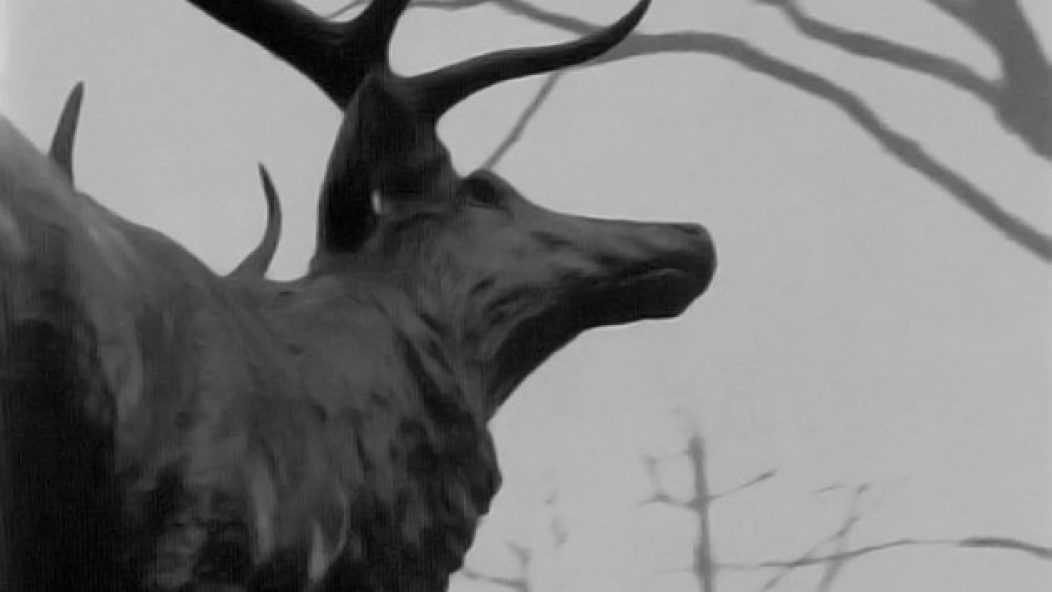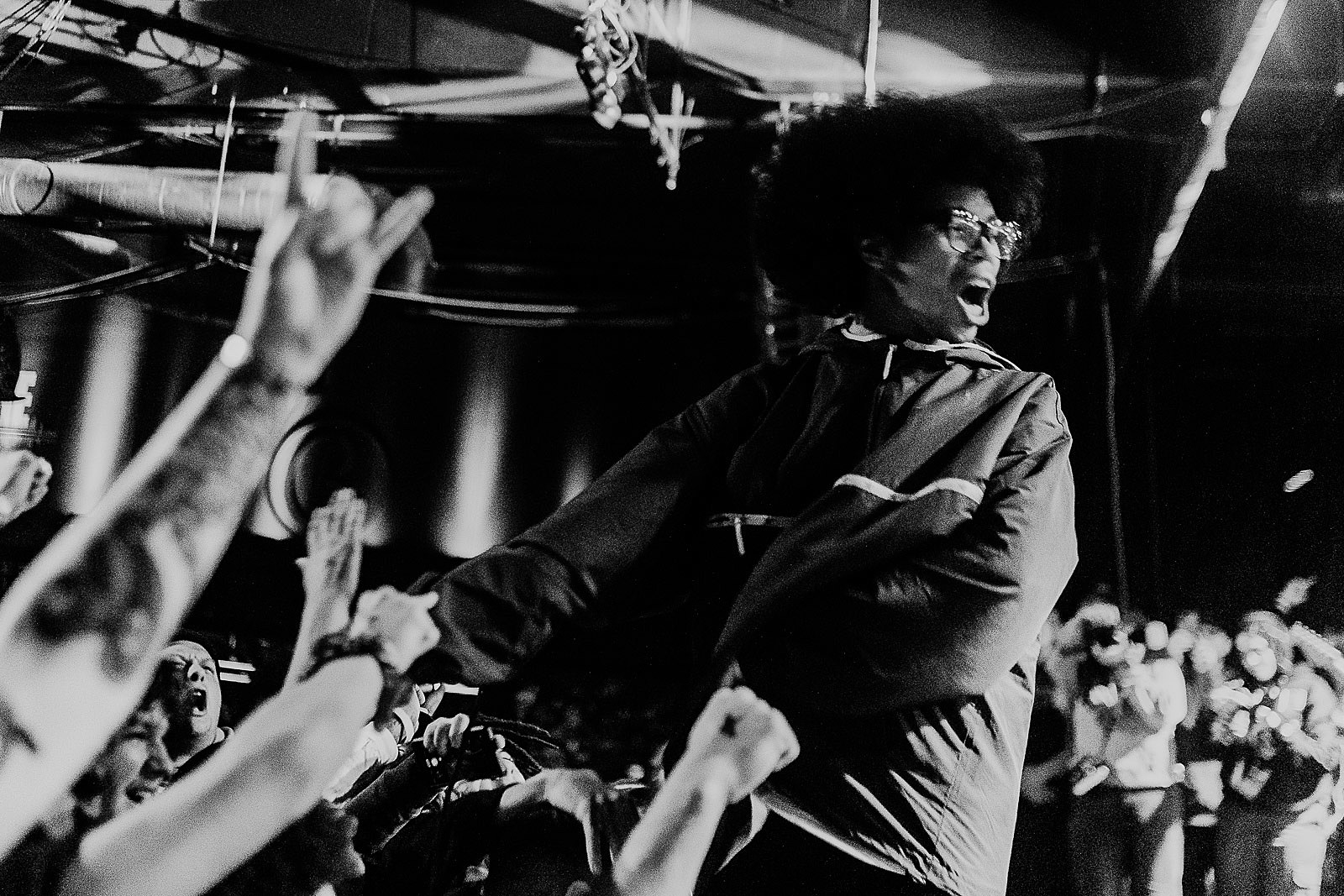
Agalloch’s The Mantle Turns 10
. . .
Agalloch’s The Mantle turned 10 on August 13th.
Picture this if you will: it’s a cold grey November in a particularly turbulent time of my life (junior year of high school; always one of the weirdest). I’m 17, and on the cusp of maturity but with a ways to go before becoming a man. I drink heavily, I yell at people who should be my friends, I am beginning to slip in school. Life is out of whack, and things are changing around me. One day, as I walk home from school, I decide to listen to Agalloch’s “I Am The Wooden Doors,” a track I had recently put on my iPod but hadn’t gotten around to actually listening to. I put on the song, and am floored. The cold, grey sky against leafless trees mirrors the album cover, but the music is so evocative that it seems as though the day were created for the song. I let my thoughts wander: I can visualize myself as the deer that appears on the cover, staring at the slate sky knowing that winter signifies death but that life will continue in spite of it. The track swirls around like a winter gale, guitars humming and piercing alongside rumbling drums. John Haughm’s breathy “it is this grandeur that protects our spirit within” is like the cold wind singing to me, a feeling that melds with lyrics to provide a tangible correlation. After six minutes, the song is done. I put it on repeat and continue to play just that one song all the way home, walking fast down the sidewalk but dreaming all the while of the wooden doors referenced in the song.
A few days later, I’m sitting in my bedroom and finally decide to play the whole album. It’s colder that day, but with a hint of sun against the clouds, and as evening falls the sun drops behind the gnarled trees and old houses of my neighborhood, and the record comes to “Odal”. The song slowly crescendos in the chilled confines of my room, and it’s a revelation as the light slowly leaves the day. There’s no glorious sunset, so it’s not as poetic as one might anticipate, but “Odal” itself is a clench and release without a climax; the guitars shimmer in, the drums play pounding fills but no actual beats per se — the whole song heaves and shifts and then simply dissipates, the epic explosion of blasts and screams that one has been anticipating never actually materializes. Like life, this song does not move in an expected manner: It fades in, grows to a roar, and fades away, leaving a dark but beautiful memory where it once was. Eventually, there’s just a faint glow in a darkening space, corresponding perfectly with that melodic, melancholic piano coda of the song, and night then coming as the wind blows over the last note of the piano. It’s as close as I’ve ever come to having a revelatory experience just by sitting and listening to music; it convinced me, a puerile teenage metalhead, that it was all right to let music stir you in such a way.
These stories illustrate the importance of The Mantle. It could be argued that the album itself is little more than a logical progression of Ved Buens Ende or Ulver’s Bergtatt; but in Agalloch’s hands, the formula becomes a different beast, one that is influential without being very imitable. Some bands have picked up on the Agalloch formula, but few have copied it wholesale because the sound is so instantly recognizable: the snarling yet plaintive guitars, the hollow drums, the shimmer of the band’s experiments into ambience, the oddly satisfying folk instruments. Rather, what The Mantle has done for metal in the last 10 years is to expand its consciousness both aesthetically and emotionally. Until then, one had metal bands experimenting with folk music, but it was generally either a folk/metal deal (Ulver) or strictly Ren-fair (Finntroll). Agalloch, however, blended folk and metal on a level not just aesthetic, but also ethical: this was folky music, in that it did not care about pomp or excess. It was about a feeling, about providing an aural impression of the place where the band called home, as any folk genre ultimately does. Listening to The Mantle is an excellent way to conjure up images of the cold, wet Pacific Northwest in the midst of winter, just as bluegrass evokes the hollers of Kentucky and blues the swampy Delta. However, Agalloch make their own tradition: there are conceptual touches in here that few bands previously would have thought to add. The tapping of the deer skull and the sound of boots on crusted snow on “The Lodge,” the wind on “Odal,” the accordion on “A Desolation Song,” all of which were new elements to be featured in a metal song in 2002. If anything, Agalloch fits the basic definition of the term “neofolk” far more than, say, Death In June: Agalloch is a new variety of folk music, taking elements of old folk traditions and weaving them with modern choices to create a new form of music for the common people of an area (be it regional or cultural) ‘til then untouched by such traditions. And, as with any good folk tradition, Agalloch has inspired further music that mimics their achievements and innovation without directly lifting their style: the North Woods drone of Celestiial, the bluegrass blast of Panopticon, and even the urban clamor of Ludicra all owe a debt to Agalloch, for it was Agalloch that taught them to be folkish without being folk-metal.
Furthermore, The Mantle was influential in that Agalloch proved to be unashamed of discussing emotion in honest terms. Yes, there were emotionally evocative metal songs and bands before Agalloch, there always have been, but Agalloch explored the human experience in such a mature, insightful manner that they have influenced countless bands and listeners hence. “You Were But A Ghost In My Arms” is a prime example: the song references a relationship, evoking feelings of love and loss in a manner poignant but reserved, with neither the vague naturalism of black metal nor the overwrought romanticism of gothic metal. The song focuses on human emotions, but does not linger or draw them out unnecessarily. This level of insight and maturity into human relationships has proved influential on both bands and listeners: when a band’s music can be described as “heartbreaking,” and when fans are given the ability to clearly identify songs with emotions, it’s clear that Agalloch’s sensitivity in approaching themes of living, loving, and losing have made a lasting impression.
Whenever it’s a cold winter’s day, wherever I might be, I always take some time to go on a walk, accompanied by this record on my iPod. It focuses me onto the smaller details: a bird on the branch of a leafless tree, a few snowflakes buffeted on a chill north wind, leaves curled and brown on a frozen stream. I think about life, both its presence and its transition, and occasionally about loving, too. I’d argue that, for the music alone, The Mantle is one of the great metal hookup albums. Most of all, however, I feel a sense of unity in Agalloch’s music as to life and passing: much as “Odal” builds, swells, and moves on, thus does existence begin, blaze, and ultimately wind to a close. That a metal album could make one feel so much is a testament to the power of Agalloch’s vision.
Agalloch played Maryland Deathfest this year, and I was within the front two rows (which should itself indicate how much I was invested in seeing them: standing up front at MDF means giving up breathing privileges). I had wondered whether the other Agalloch fans in attendance had as strong an emotional connection with the band as I did; could they tell how much the music had affected me? Did anyone understand it like I did? My question was answered when, halfway through “You Were But A Ghost In My Arms,” I looked behind me and saw a fellow audience member visibly crying. Not drunken, “I-fuckin-love-you-man” tears, but actual emotional bawling. This guy meant it; Agalloch was his band, much as they were also mine, and they had meant so much to him that, even as a metal fan who’s not ordinarily supposed to show emotion, he couldn’t contain himself. I didn’t cry along with him, but I saw where I could have. This is the legacy of The Mantle. It’s a beautiful album that has left many of us with an increased sense of wonder, beauty, and an ability to look introspectively towards such things while still feeling a deep emotional bond. I walk with it, this guy cried with it; reactions may vary, but our common experience is one based deep within the human psyche. The best art draws out the fundamental aspects of the human experience, and with The Mantle, Agalloch did not only that but showed others the means to do it too.
. . .










